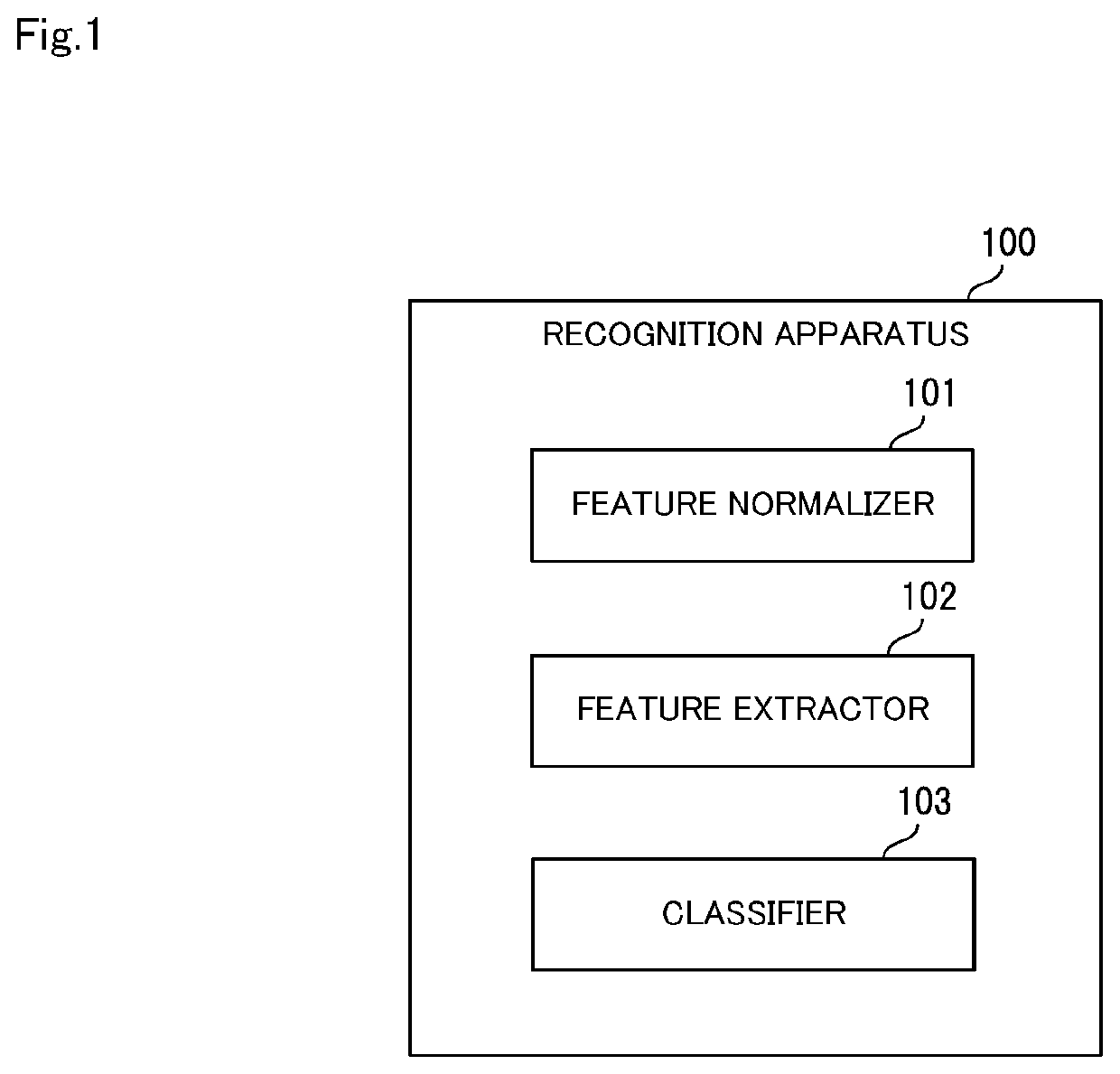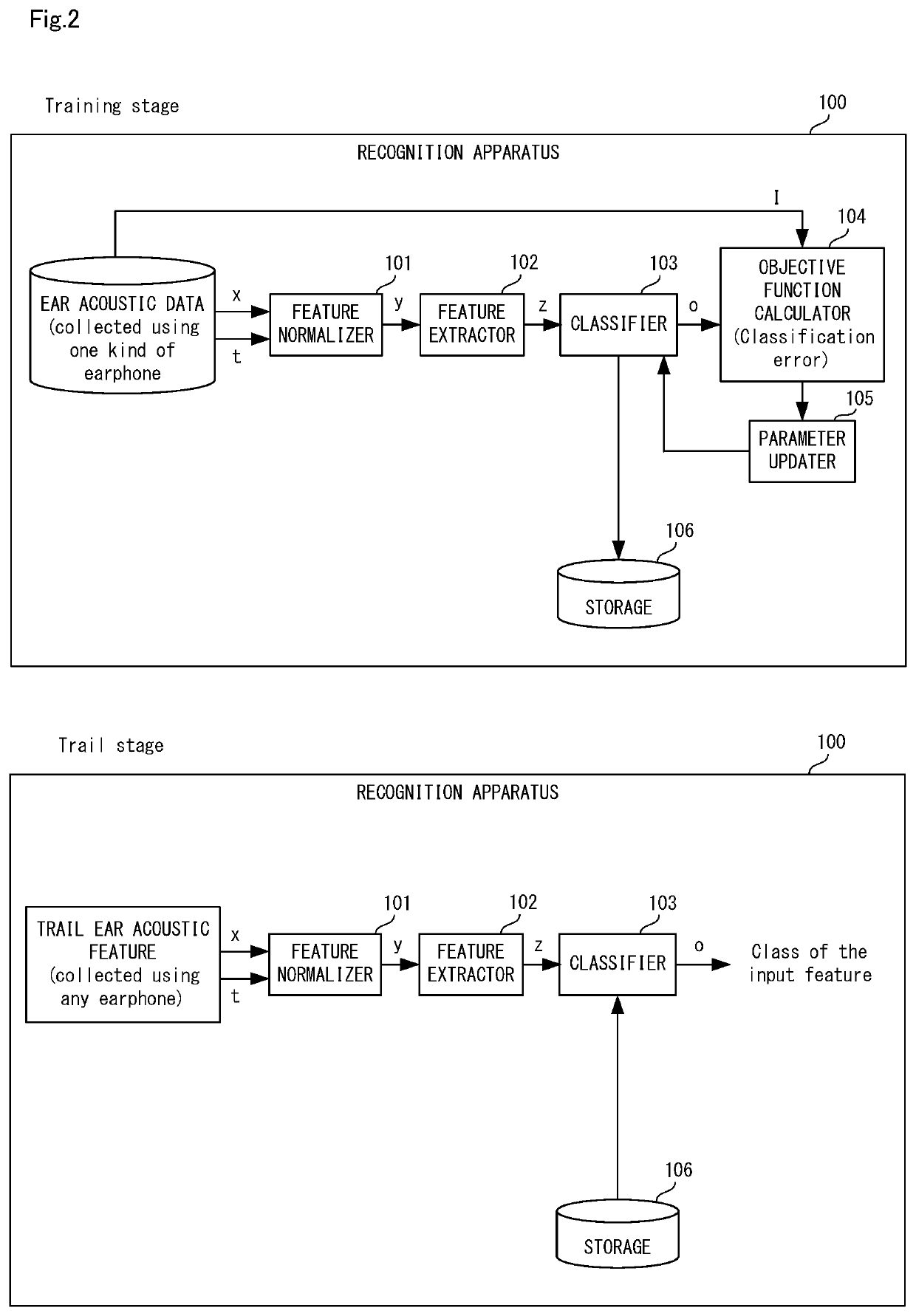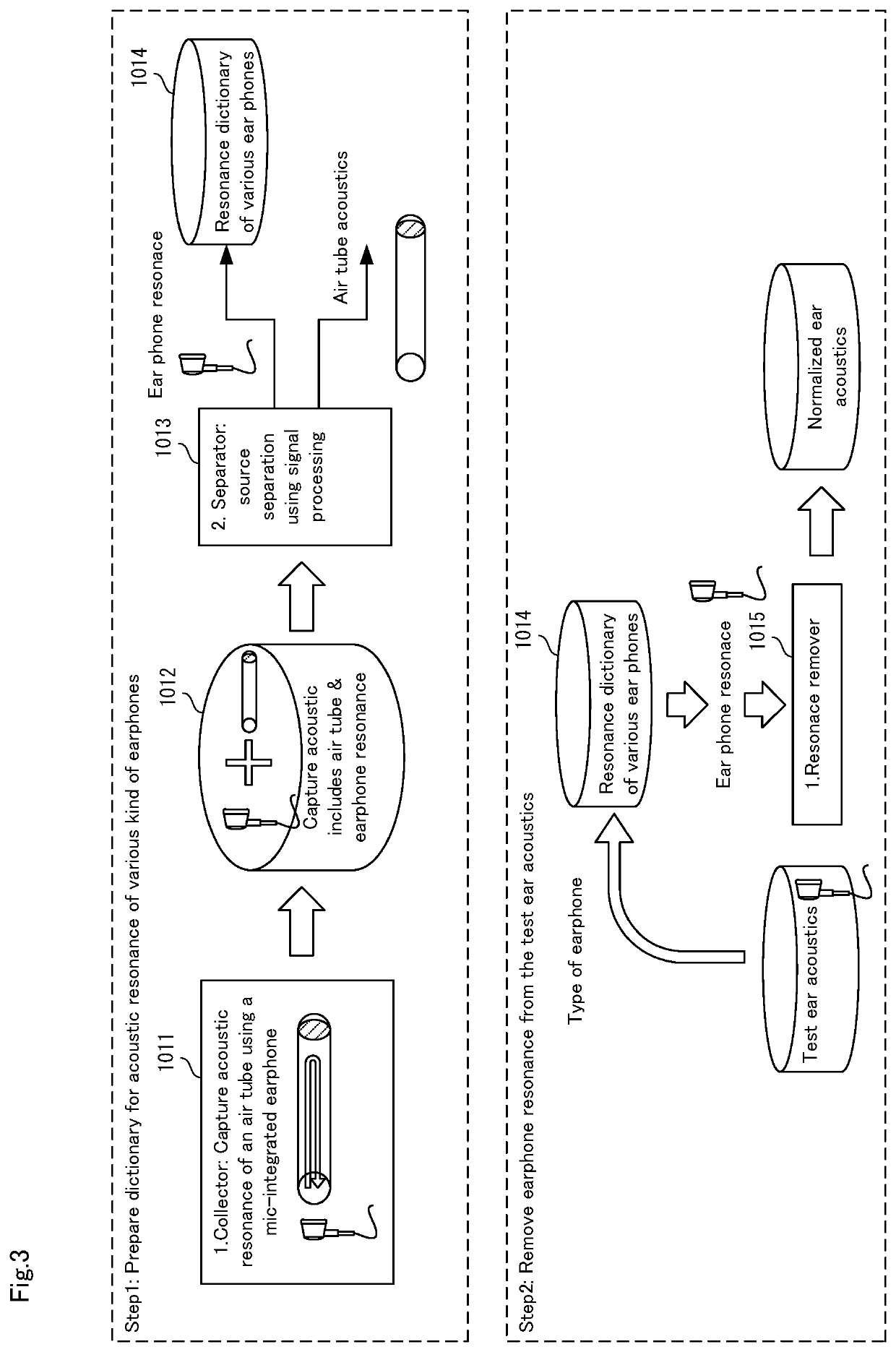Recognition apparatus, recognition method, and computer-readable recording medium
a recognition apparatus and recognition method technology, applied in medical science, diagnostics, auscultation instruments, etc., can solve the problems of large within-class variability of individuals, ear acoustics can get corrupted, and the expected property of features of being independent of the nature of earphones cannot be satisfied, so as to improve classification accuracy, reduce with-in-class variability, and improve the representation of ear acoustic features
- Summary
- Abstract
- Description
- Claims
- Application Information
AI Technical Summary
Benefits of technology
Problems solved by technology
Method used
Image
Examples
embodiment
[0061]Hereinafter, a recognition apparatus, a recognition method, and a program of exemplary embodiments of the present invention will be described in detail with reference to FIGS. 1 to 6. The implementations are described in complete detail. Along with the illustrative drawings, the explanation provided here is so as to provide a solid guide to a person skilled in the art to practice this invention.
Device Configuration
[0062]First, the schematic configuration of the recognition apparatus of the embodiment will be described. FIG. 1 is a block diagram illustrating the schematic configuration of the recognition apparatus according to the embodiment of the present invention.
[0063]A recognition apparatus 100 of the embodiment shown in FIG. 1 is an apparatus for ear acoustic recognition. As shown in FIG. 1, the recognition apparatus 100 includes a feature normalizer 101, a feature extractor 102, and a classifier 103.
[0064]The feature normalizer 101 reads input ear acoustic data and remov...
PUM
 Login to view more
Login to view more Abstract
Description
Claims
Application Information
 Login to view more
Login to view more - R&D Engineer
- R&D Manager
- IP Professional
- Industry Leading Data Capabilities
- Powerful AI technology
- Patent DNA Extraction
Browse by: Latest US Patents, China's latest patents, Technical Efficacy Thesaurus, Application Domain, Technology Topic.
© 2024 PatSnap. All rights reserved.Legal|Privacy policy|Modern Slavery Act Transparency Statement|Sitemap



